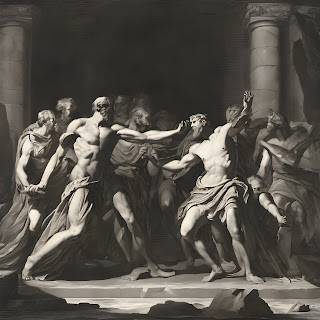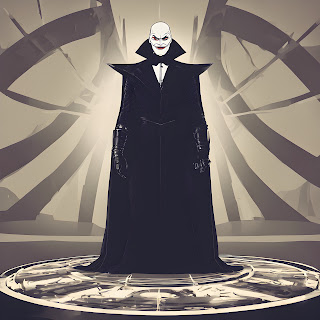Discover the art of script writing, get book writing and promotion tips, and get recommendations for captivating books on Pen and Plot. Join our community of passionate writers and readers today!
Wednesday, 12 June 2024
Aeschylus and His Plays
Wednesday, 5 June 2024
The Suppliants by Aeschylus: Unveiling Ancient Greek Tragedy and Its Enduring Themes
- Chorus of the fifty daughters of Danaus.
- Danaus, a descentant of Zeus and Io.
- Pelasgus, King of Argos.
- Herald of the Egyptians.
- Second chorus of maids attending the Danaids.
- Other soldiers and Attendants.
Sunday, 2 June 2024
Ancient Stories: The Greek Theatre
Wednesday, 29 May 2024
"Philoctetes": Exploring the Themes, Characters, and Motifs in Sophocles' Ancient Greek Tragedy
''Philoctetes'' is an ancient Greek tragedy written by Sophocles. It was first performed at the Great Dionysia in 409 BC, where it won the first prize. The plot centres around the character of Philoctetes, a skilled and famous archer who was abandoned on the island of Lemnos by the Greek army due to a foul-smelling wound that has become infected. One of the people who betrayed him, leaving him on the island, was Odysseus. Years later, and after receiving a prophecy, the Greeks realise that they need Philoctetes and his powerful bow and arrows to defeat the Trojans. Odysseus and Neoptolemus, the son of Achilles, arrive on the island to convince Philoctetes to join their cause. According to mythology, Philoctetes' weapons belonged to Heracles, and he gave them to him before he died.
Wednesday, 22 May 2024
Unveiling the Enigmatic Appeal: Exploring Beloved Villain Characters in Movies and TV Shows
The Psychology Behind the Appeal of Villain Characters
YouTube
Menander: The Life and Works of the Ancient Greek Comic Poet
Menander was born around 342 BC in Athens and died in 290 BC. Hailing from a family of prominent intellectuals, his father was Diopeithes, a...

-
The Enuma Elis is a mesmerising epic poem from ancient Mesopotamia that has captivated scholars and enthusiasts for centuries. As one of the...
-
The chorus is an integral part of ancient Greek tragedy, playing a vital role in enhancing the dramatic effect and conveying the central the...
-
Ancient Greek tragedy stands as a testament to the enduring power of storytelling and its ability to evoke deep emotions within the human ps...













